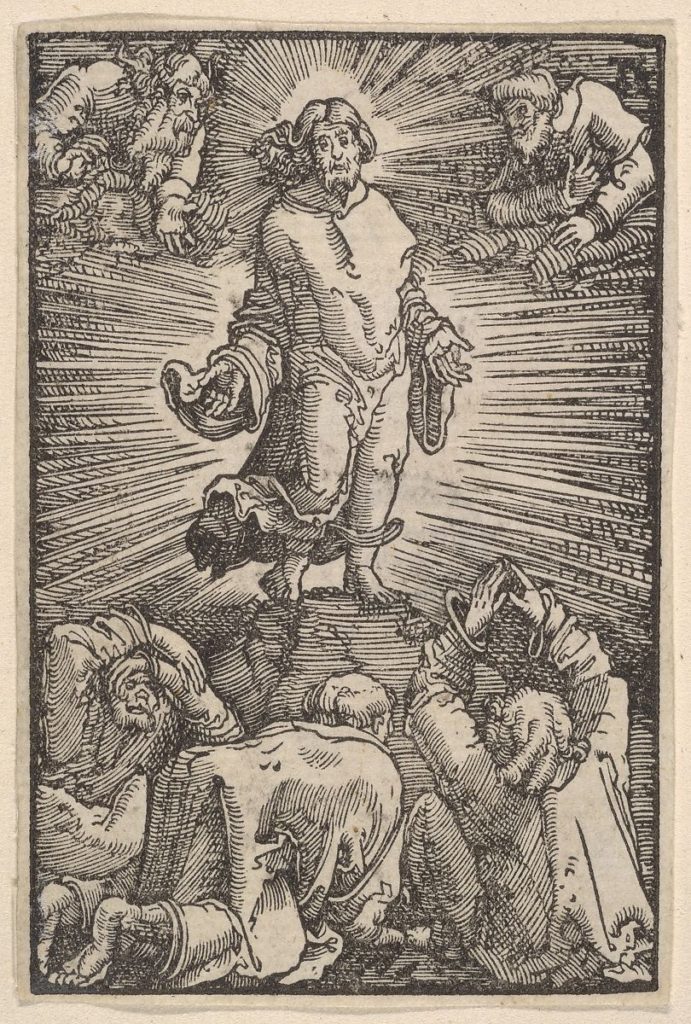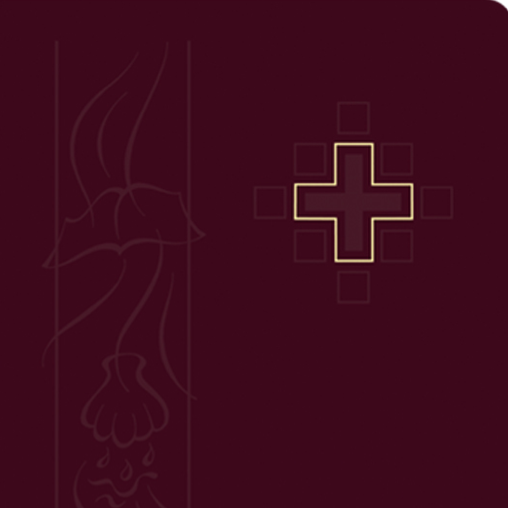O Wondrous Type!

The Feast of the Transfiguration is the Church’s celebration of a pivotal moment in Jesus’ ministry on earth. The scriptural account is found in the synoptic Gospels:
As the time for his crucifixion drew near, Jesus took Peter, James, John, and ascended the mountain to pray. He was there transfigured in such a way that his face shone brightly and his garments became radiant. Moses and Elisha appeared with him, and they started conversing about his exodus: his Passion. While this was going on, a cloud concealed these three, and the disciples heard the Father’s voice ring out: “This is my beloved Son, with whom I am well pleased; listen to him” (Matt 17:5). When the cloud disappeared, so did Moses and Elisha, and Jesus and his disciples remained. From there they traveled down the mountain, and Jesus set his face toward Jerusalem.
In this miraculous event, the Father demonstrated how all of time had been leading up to Jesus. Moses and Elijah and the witness of the entire Old Testament are always pointing to him. In many ways God spoke through his prophets of old, but now in these days he speaks through the Word, his Son (Heb. 1:1). Through the communion of Jesus with Moses, Elijah, and the apostles—the great speakers of God’s Word throughout the ages—on the Mount of Transfiguration, we receive a clear picture of the harmony of God’s Word of salvation over time.
Furthermore, the Transfiguration is a vision of our own glory through the manifestation of Jesus’ splendor. Irenaeus of Lyons cues us into this reality so poetically: “Now the glory of God is humanity fully alive, for the life of humanity is the vision of God.” Thus, this event is a comfort to all Christians because in Christ our humanity is made fully alive, and this is the glory into which we are assumed as co-heirs of the Kingdom of God.
Finally, the Transfiguration is striking because it is in the context of Jesus’ glorification, even if just a glimpse of it, that he should speak of his Passion. Jesus’ Passion and glorification go together, even before he is resurrected from the dead, because his crucifixion is the triumph of the one whose victory will be seen on Easter morning. And so as Jesus and his disciples make their descent from the mountain, Jesus turns his face toward Jerusalem (Luke 9:51).
A Brief History
The Feast of the Transfiguration has long been celebrated by the Church, but it wasn’t until the middle of the fifteenth century that its date was fixed as August 6th by Pope Calixtus III in celebration of a significant victory over the Turks that took place on that date.
During the Reformation, the Lutherans altered the pre-Reformation lectionary in a handful of places, one of which was the last Sunday after Epiphany. They selected the Transfiguration lessons as a conclusion to the Epiphany season, and over time the feast itself was also celebrated on this date. Thematically, it fits well here both as a manifestation of Jesus’ glory and as a transition from the heights of Christmas joy to the solemn time of Lent and Jesus’ passion.
Together with much of Christendom, our two LCMS lectionaries suggest observing the feast as the last Sunday after Epiphany, but some parishes still hold to the historic date of August 6th. Since this date has a long tradition in Lutheran and other traditions and is related to many of the historic traditions for Transfiguration Day—more on that to come later this week—we have chosen to write on this historic date. You are, of course, welcome to modify them for your own observance if you celebrate this feast at the end of Epiphany!

Collect
O God, who in the glorious transfigurations of Thine only begotten Son confirmed the mysteries of the faith by the testimony of the fathers and who, in the voice that came from the bright cloud, didst in a wonderful manner foreshadow the adoption of sons: mercifully make and keep us co-heirs with the King of His glory, and bring us to the enjoyment of the same; through the same Jesus Christ, Thy Son, our Lord, who liveth and reigneth with Thee and the Holy Ghost: ever one God, world without end. Amen.
Lessons
Resources
Issues, Etc. interview with Rev. David Petersen on the Transfiguration of our Lord.

See LSB 413-417 for the Transfiguration section. 413 is the hymn of the week for Transfiguration and certainly a favorite.
Propers found in Daily Divine Service Book: A Lutheran Daily Missal, edited by the Rev. Heath Curtis
References:
1. Pfatteicher, Philip H. Journey into the Heart of God. Oxford University Press. 2013.
Images:
1. The Transfiguration of Christ, from The Fall and Salvation of Mankind Through the Life and Passion of Christ, Albrecht Altdorfer, Germany, 1513
2. The Transfiguration, Raffaello Sanzio, Italy, 1516-1520



